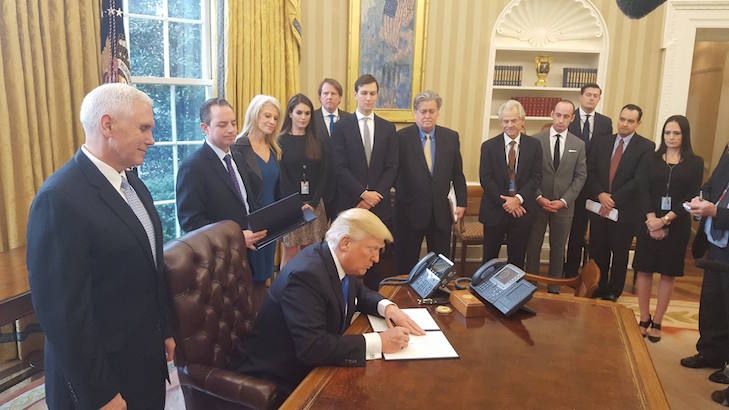
Standing Rock, Hashtag Activism, & The Road Ahead
In this essay, Andrea Hunt discusses how social media is being used by activists at the Standing Rock Indian Reservation and their supporters around the world to resist the construction of North Dakota Access Pipeline.

In the final days of Barack Obama’s presidency, the Army Corps of Engineers announced it would not allow the construction of the North Dakota Access Pipeline (DAPL) to be completed. This decision was celebrated by protestors who, since April of last year, have been physically blocking construction of the pipeline at the Standing Rock Indian Reservation. Activists have opposed construction of the pipeline for many reasons. First, the pipeline poses a threat to the drinking water of those living near it. Second, many activists contend that construction of the pipeline violates multiple existing treaties the U.S. government signed with Native American tribes in the area. Third, many activists are concerned that the pipeline will lead to expanded use of fossil fuels and ultimately speed climate change. Despite these, and many more, objections, President Trump signed an executive order last week directing government officials to allow the pipeline’s construction.
What happens next remains unclear. However, we can learn something about social movements, political communication, and resource mobilization by examining how activists used social media to achieve their goals.
Standing with Standing Rock Through Hashtag Activism
While water protectors are at Standing Rock, others are taking part in Hashtag Activism (i.e. speaking out and raising awareness via social media). This modern form of activism uses social media to facilitate political communication and as a way to gather resources from supporters around the world. Loader (2008) suggests that online or virtual protests provide new political opportunities and unconventional forms of political interventions.
The question remains though of whether online or virtual protests shape a shared and collective identity the same way that face-to-face activism does? The answer to this question hinges on the differences between crowd collective action and mass collective action. Crowd collective action occurs when people march, boycott, or protest together in a face-to-face setting. Mass Collective Action, on the other hand, is activism carried out by people who are not face-to-face. Examples of mass collective action would include social media campaigns, online petitions, and letter writing campaigns.
Some argue that there are potential challenges from less face-to-face contact and it is a cop out by replacing real engagement of social issues with hashtags. It is a way to provide symbolic resources rather than sending real resources to help the protectors. For example, checking in via Facebook at Standing Rock serves as a symbolic resource. Many people thought by checking in at Standing Rock that they were preventing the police from identifying who was actually there. This is likely not the case, however, it definitely raised awareness and started conversations about Standing Rock.
Social media has also been vital to modern protests by providing alternative communication channels outside of mainstream news media outlets. Standing Rock has received little news coverage from national media outlets. Water protectors have used social media to live broadcast clashes with authorities and to send real-time updates to supporters. Broadcasts like these allow the public to see with their own eyes what is going on and they ensure that these events cannot be erased from public view. Furthermore, these live broadcasts make it harder for government officials to lie about or frame their actions in an unfairly positive light.
What Role Will Hashtag Activism Serve Going Forward?
Activism has flourished across the country since president Trump took office. The day after Trump’s inauguration, millions of people participated in Women’s Marches held in all 50 states and around the world. The following Saturday scores of protestors flooded airports around the country in opposition of Trump’s executive order banning immigration from seven majority-Muslim nations. Social media played a crucial role in organizing and executing these acts of resistance. It’s clear that social media will continue to play a role in both online and face-to-face activism, but how effective these efforts will be at creating or resisting political change, remains unclear. Will the water protectors at Standing Rock be able to permanently thwart the construction of the Dakota Access Pipeline? What role will hashtag activism play in this and other forms of resistance? Only time will tell.
Dig Deeper:
- In this piece, I suggest that the scenes at Standing Rock are reminiscent of the Civil Rights movement. What are some of the similarities and differences?
- What are some examples of other forms of Hashtag Activism not mentioned in this piece?
- Did you check-in at Standing Rock or know others who did? Why do you think people participated in this?
- Is crowd collective action or mass collective action more successful in social movements? Explain your answer.
References:
- Loader, Brian D. 2008. “Social Movements and New Media.” Sociology Compass 2(6): 1920–1933.
Image Credit: Pax Ahimsa Gethen.
